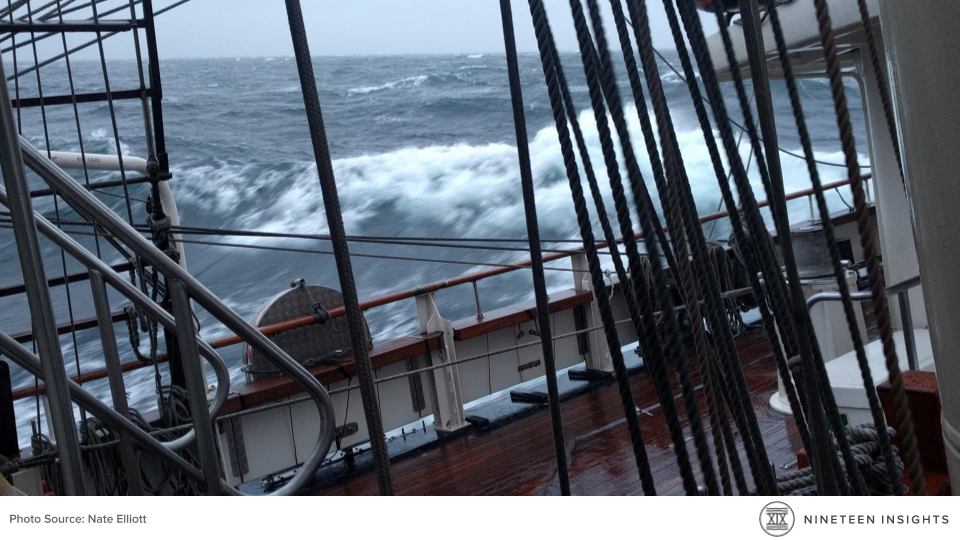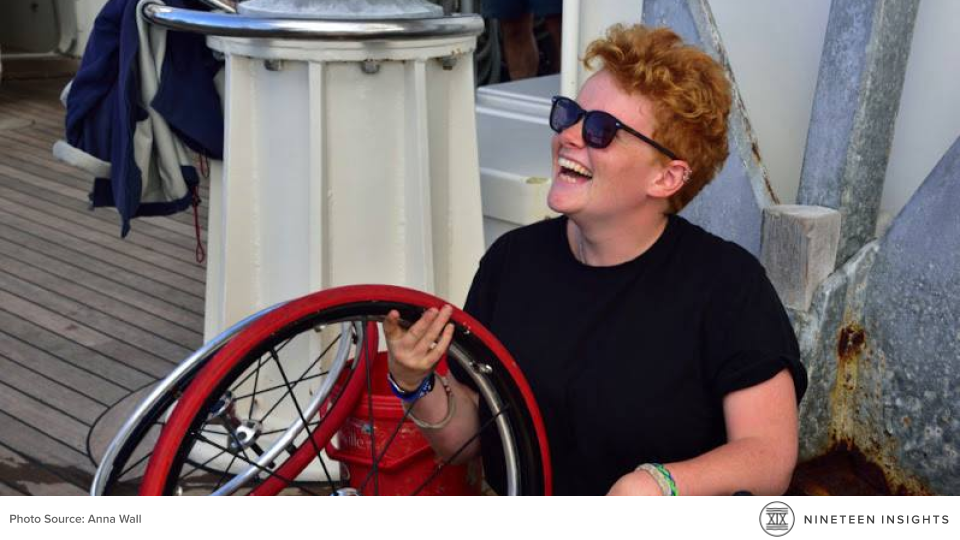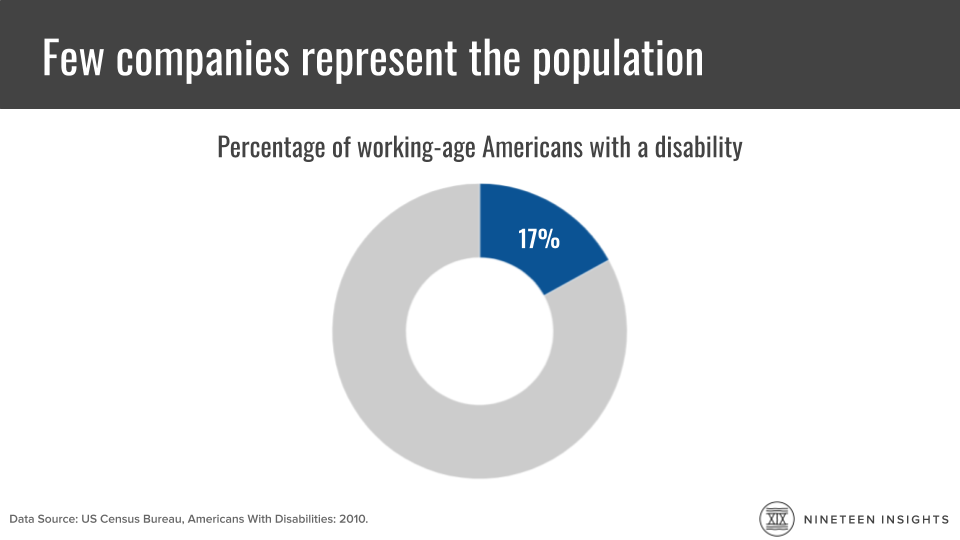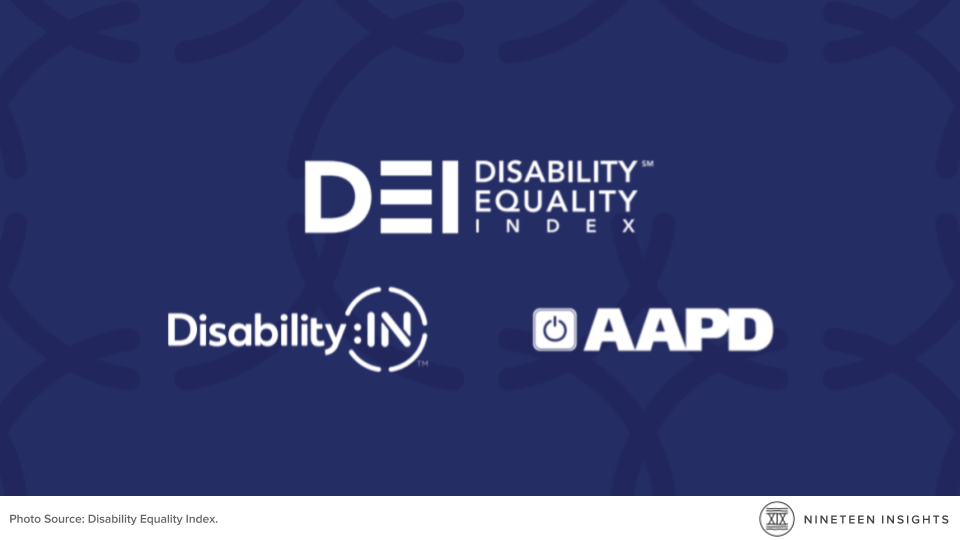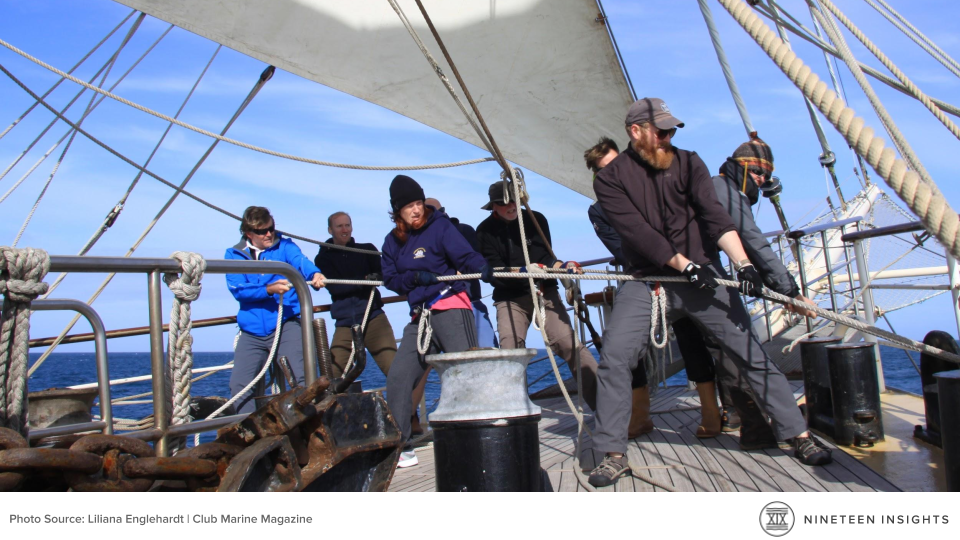This week, Nineteen Insights founder and principal Nate Elliott presented at DisruptHR Philadelphia. This event asks speakers deliver five-minute presentations — with 20 slides, each set to auto-advance every 15 seconds — designed to energize, inform, and empower people in the HR field. Nate’s topic: Create Mixed-Ability Teams To Drive Success.
Here are his slides and script:
“In my day job, I'm a market researcher. But in the past few years I've also sailed 15,000 miles across three oceans on tall ships like these, everywhere from Iceland to the Canary Islands to Australia.
As I've sailed around the world I've seen pods of dolphins play in our bow wave, I've seen the sun set like fire over the ocean, and I've seen every star in the galaxy above our masts.
Of course, it's not always smooth sailing. When the wind blows hard the temperature drops near freezing and the ship can roll 70 degrees from one side to the other. Storms can send waves crashing over our decks and literally shred our sails.
What might surprise you is I've done all this sailing with what we call a mixed-ability crew that includes people who use wheelchairs, with multiple sclerosis and cerebral palsy, with visual and hearing impairments, and other kinds of disabilities.
And I'm here to tell you that if people with disabilities can thrive in the toughest conditions at sea, if they can survive the Bermuda Triangle and rounding Cape Horn and even the iceberg field that sank the Titanic, they can thrive in your organization, too. Let me give you three examples.
First is James, a 30-year-old with cerebral palsy. It takes him tremendous effort just walk the deck of our ship. But every chance he gets, James climbs more than five stories up our mast -- a challenge that scares off even many able-bodied crew.
The thing is, it shouldn’t surprise us that James can do the same things people without disabilities can do -- because studies show that people with disabilities perform just as well as their able-bodied peers on job reviews.
Then there's Beryl, a 77-year-old with multiple sclerosis. After a grueling month sailing the Arctic Circle it was her turn to scrub dishes in the galley. The chief mate told us to give Beryl the day off so she could rest -- but Beryl refused. She said if everyone else scrubbed dishes, she would too.
It turns out this is typical. Research shows people with disabilities actually take fewer days off from work. They also stay with their employers for longer. Give people with disabilities a chance, and they'll work hard.
Third, there's the night our deck officer could hear a sail chafing, but couldn't locate the exact problem in the dark. It was a visually-impaired crew member who could hear which direction the noise was coming from who gave us a chance to fix the problem and save the sail.
This wasn't a fluke. Because mixed-ability teams contain a variety of different skills and perspectives, they're actually better at solving problems. That's one reason companies that champion disabled employees produce better profits.
And despite what you might think, employees with disabilities cost nothing more than able-bodied staff. Most companies said they didn’t have to spend a penny on accommodations; even those who do, average less than $500.
There's just one problem: Despite the fact disabled employees work harder, solve problems better, and drive more profit, most companies don't hire them. Less than one-third of Americans with disabilities have a job.
This isn't even on the radar for most companies. Fewer than half of top employers mention the word disability in their diversity & inclusion statements, and just 2% report how many of their employees are disabled.
It's no surprise Anna, a wheelchair user who used to look for part-time jobs to pay her way through grad school, got sick of companies cancelling job interviews when she'd ask if their offices were accessible. She eventually gave up looking for work.
And while I'm sure no one here would refuse to interview a wheelchair user, I have to ask: What percentage of your team is disabled? 17% of working-age Americans have disabilities. I've never worked at a company that came close to reflecting that reality.
So I'd like you to do three things when you get back to work tomorrow. First, commit to taking the Disability Equality Index questionnaire. It'll benchmark your disability inclusion, and give you specific ideas for how your company can improve.
Second, make sure both your office and your website are accessible. People can't learn about your job openings or ace their interviews if they can't access your site. And they need to be able to get into the building, too.
Third, make a plan to proactively hire people with disabilities. It's not enough to say you're open to the idea; if you want the benefits of a mixed-ability team, you need to actively recruit for that team. So, attend disability-focused job fairs.
Engage with disabled student unions at local colleges. List your jobs on GettingHired.com or AbilityJobs.com. I've seen first-hand what people with disabilities can do when given a chance, both for themselves and for their organizations. Let's give them that chance.”



